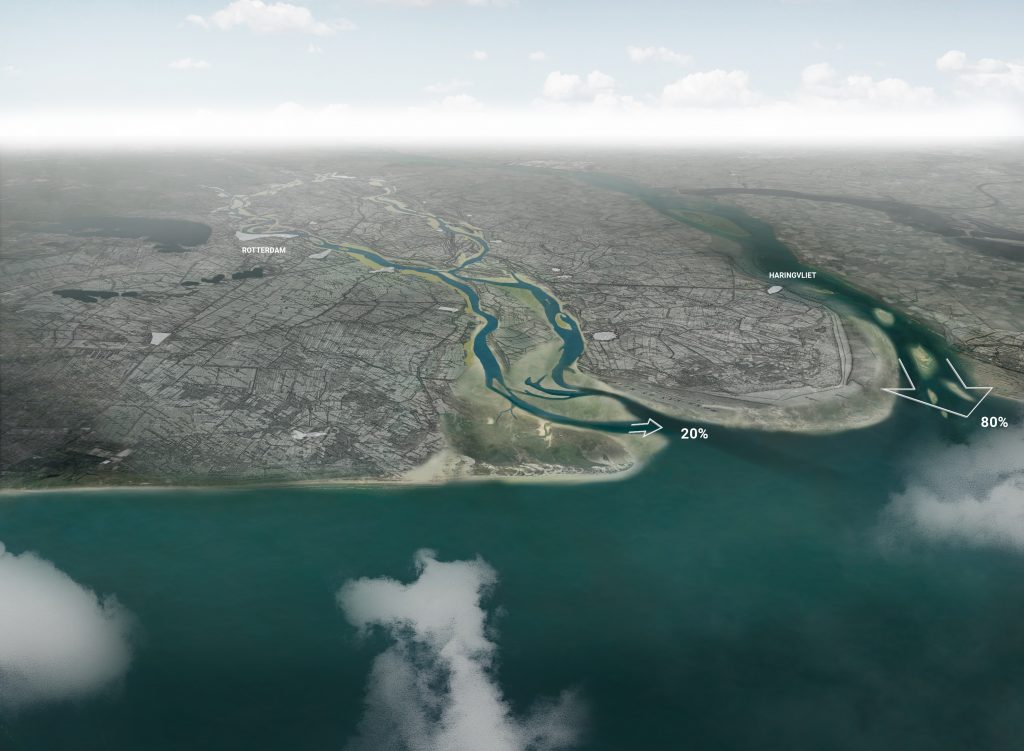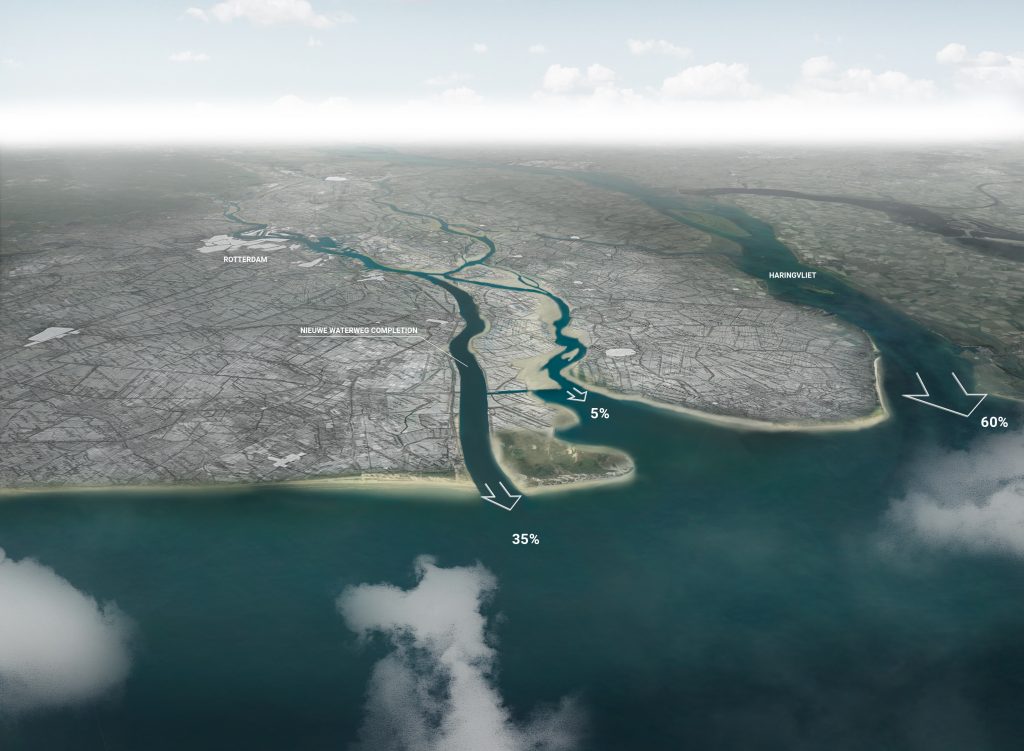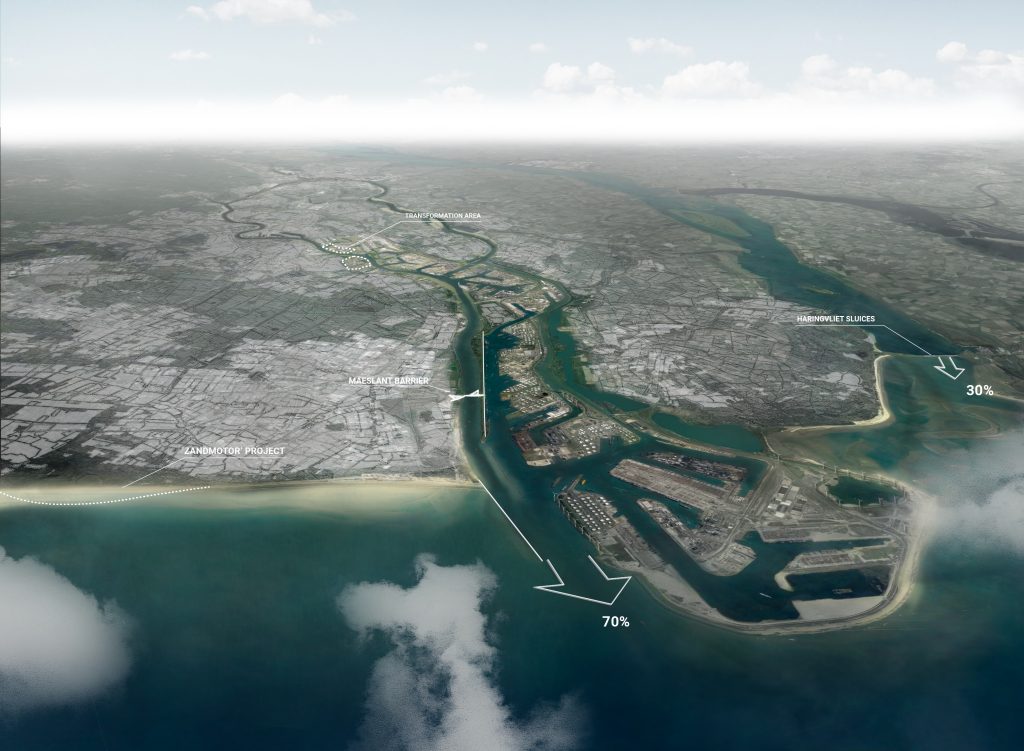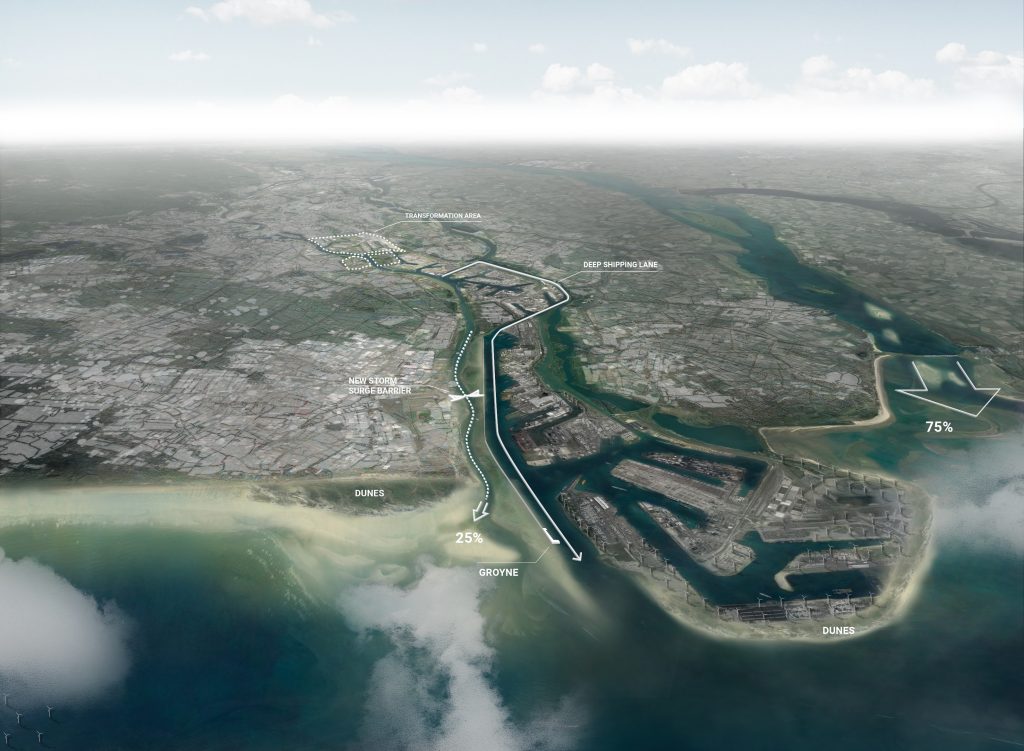At the end of the nineteenth century, a miracle took place in Rotterdam. Until then, this port city was slowly languishing. Elsewhere in Europe, the industrial revolution led to an enormous growth in economic activity and a need for more and deeper waterways. Rotterdam, however, could only watch meekly as the river Nieuwe Maas (New Meuse), which connected the port to the sea, slowly but surely silted up (see following image). The port gradually became inaccessible to the ever larger seagoing vessels. The city’s harbor basins had not been renovated and enlarged for over two hundred years.

But in 1872 a miracle happened. In that year the first steamship, the Richard Young, sailed through the Nieuwe Waterweg (New Waterway): an artificial connection between the sea and the port of Rotterdam designed by engineer Pieter Caland (see following image). The project was accompanied by much discussion and differences of opinion about whether this new, fabricated estuary would really improve the discharge of the river and the accessibility of Rotterdam. The then Prime Minister Thorbecke called the project ‘a risky venture’. But the venture turned out pretty well following a number of improvements made in the first decades. It gave rise to an unprecedented, explosive growth of port and city, making the port the engine of the Dutch economy. The construction of the Nieuwe Waterweg was not unique, however. New excavation and dredging technology made the digging of new shipping canals and the deepening of river estuaries possible all over the world during the same period. New navigation routes became possible because of projects such as the Suez Canal (1869) and a few decades later the Panama Canal (1914).

A second miracle of Rotterdam took place after World War II, when the destroyed city rose like a phoenix from its ashes and became the symbol of the reconstruction and modernization of the Netherlands. Next to the reconstructed inner city, a new industrial port complex alongside the Nieuwe Waterweg became the beating heart of this modernization. Deepening the shipping canal and providing two secondary parallel canals (the Calandkanaal and Hartel canal) were key factors in this process. Moreover, the Delta works (constructed after a disastrous flood in the Rhine-Meuse delta in 1953) completed the Nieuwe Waterweg as the main discharge channel of the Dutch river system (see following image). These works also created the large fresh water basins necessary for processing industries. Rotterdam became the second largest petrochemical cluster globally and was the largest port in the world during the period 1962-2004. Rotterdam owed this position in particular to the transshipment, storage and processing of fossil fuels, whose functions occupy more than 60% of the current port area.

However, climate change and the energy transition are forcing Rotterdam to reconsider its role in the national and international system of transporting raw materials and energy supplies. A new, third miracle is needed for the Rotterdam of the future.
The Nieuwe Waterweg could once again hold the key to that miracle. Next to industrial development and economic prosperity, the construction and frequent deepening of this shipping canal has also led to problems that will only increase in the near future. The transformation from a natural estuary to an industrial shipping canal has led to the loss of the natural ecosystem of this part of the delta, which is essential as a breeding and feeding area for migratory birds and migratory fish. It has also led to a greater influence of the sea on the urbanized region of Rotterdam, resulting in higher water levels and greater salt intrusion. Because of an expected acceleration of sea level rise, this influence of the sea in the urban region will increase dramatically in the future.
From a spatial development perspective, the port complex along the Nieuwe Waterweg has started to function as a 40-kilometre-long corridor that hinders a coherent and sustainable development of the Rotterdam – The Hague region.
As an answer to these problems, the proposal ‘The Rhine mouth as an estuary’ was launched recently [1]. The central statement of the proposal is that the estuary character of this river mouth should be repaired by stopping the process of continuous dredging. Allowing the process of sedimentation will result in a shallower river channel with more gradual transitions from land to water. This will create new opportunities for a restoration of the estuary character of the river mouth, with more natural wildlife and biodiversity, more natural protection against high water and salt intrusion, and better conditions for new spatial coherences and attractive urban patterns (see following image).

This nature-based approach, however, will indeed require a serious adaptation of the port and related industries. We argue that this adaptation is inevitable because of the urgency of the energy transition. This new approach to the river mouth can function as an accelerator of the necessary processes of the energy transition and the building of a more circular and sustainable port economy. Instead of considering economic development as the leading force to which the natural environment should be adapted, we should reason the other way around: for the sake of mother earth, we should give absolute priority to a sustainable natural system, and adapt economic development to this system.
‘The Rhine mouth as an estuary’ creates the possibility to combine different agendas concerning the natural environment, water management, economic development and urban planning. It states that a ‘nature-based solution’ is necessary and possible, also for this artificial river mouth. It will create the start-condition for the third miracle of Rotterdam.
Because many port city-regions are struggling with similar problems, the project is relevant to international debates on the future of port cities and delta regions. The Dutch Delta Program, which is responsible for water safety in the Netherlands in the short and long term, has taken the proposal into consideration as one of the possible future scenarios for the Netherlands. With Rotterdam being the largest port of Europe and the Netherlands a frontrunner on water management, the New Waterway can, once again, become an inspiring example for port cities, deltas and estuaries worldwide.
Fall 2022, the 150th anniversary of the New Waterway can be celebrated. It is the reason for the PortCityFutures Center to organize a conference on the history and future of the New Waterway and comparable shipping canals all over the world.
Head Image | Aerial view of a possible future of the Rotterdam region, seen from the East to the West, with the New Waterway and port landscape as a central green-blue axis. (© Bureau Stroming).
Note
[1] The proposal has been presented by Han Meyer, ARK Natuurontwikkeling, World Wildlife Fund and H+N+S Landscape Architects. https://www.wwf.nl/wat-we-doen/actueel/nieuws/meer-natuur-ondiepere-rijnmonding/.